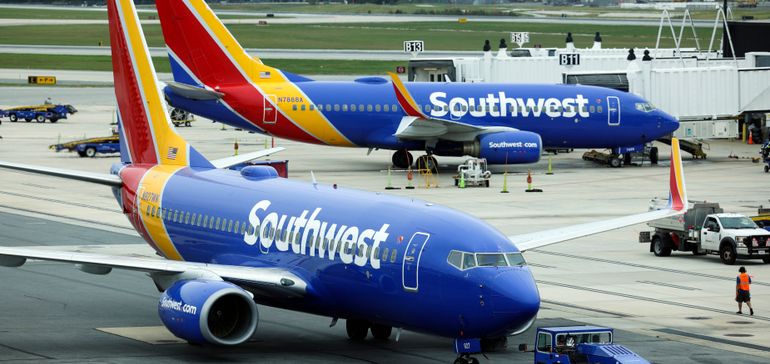Dive Brief:
- Southwest Airlines has committed more than $1 billion of its annual operating budget to maintaining and upgrading IT systems, CEO Bob Jordan said in a Tuesday letter addressed to the carrier’s rewards customers. The investment is part of a 5-year strategic plan, Jordan said in a Dec. 31 memo.
- The company pledged to enhance crew engagement technology, update crew recovery systems and establish supplemental staffing as stopgap measures to reduce the risk of future operational disruptions.
- Technological deficiencies forced Southwest to cancel nearly 17,000 flights over the holiday period in December, costing an estimated $725 million-$825 million, according to a Jan. 6 SEC filing. “The recent disruption will accelerate our plans to enhance our processes and technology,” Jordan said in the Tuesday letter.
Dive Insight:
Outdated technology was at the heart of the Southwest meltdown.
Operation dysfunction left thousands of holiday travelers stranded at airports across the country, as the carrier’s initial inability to navigate weather delays snowballed into mass cancellations.
The crisis spurred Jordan to push for greater investment in tools, technology and processes. “One of our five-year strategic plan priorities established in 2021 is to modernize the operation,” Jordan said in the Dec. 31 memo, which noted that COO Andrew Watterson is focused on improving the carrier’s ability to recover from operational challenges.
Lack of meaningful progress on IT upgrades was cited by the Southwest Airlines Pilot Association in a Wednesday strike authorization vote announcement by SWAPA President Captain Casey Murray.
Southwest, the sixth-largest domestic carrier based on revenue, had not put much emphasis on the kind of modernization that could have mitigated the impact of Winter Storm Elliott, Doug Laney, data expert and innovation fellow at consulting firm West Monroe, told CIO Dive.
“I went over the last ten years of annual reports and there was no mention of major technology initiatives, and zero mention of data and analytics as a key competency,” Laney said.
Data-driven resource modeling would have helped the airline recover from the initial impact of the storm, according to Laney.
Real-time access to crew location and assignments data would have provided Southwest with the information needed to regain operational footing after the storm. A relatively simple fix, such as a mobile app, can provide this logistics capability, Bobby Cameron, VP and principal analyst at Forrester, told CIO Dive.
“You don’t need geolocation using advanced satellites,” Cameron said. “They weren’t able to take in cell phone location data to figure out where their crews were.”
Southwest is not alone in its air travel woes.
Technology deficiencies were also to blame for the FAA systems outage that delayed nearly 11,000 flights on Jan. 11. In a Wednesday statement, the FAA said the Notice to Air Missions system failure was due to personnel accidentally deleting files while “working to correct synchronization between the live primary database and a backup database.”
No evidence of cyberattack or malicious intent has so far been found, the FAA said. The system has been repaired and the FAA has taken steps to improve the resilience of NOTAM.



